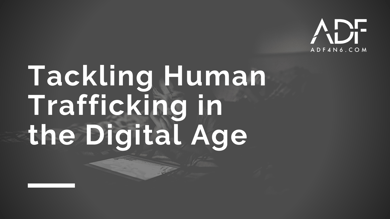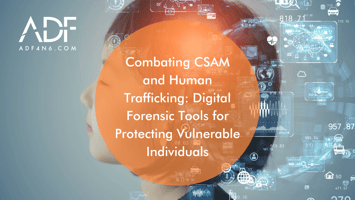CSAM or child sexual abuse material refers to any visual media depicting children engaged in sexual...
Tackling Human Trafficking in the Digital Age
In recent years, law enforcement and investigators have had to significantly adjust their approach to tackling human trafficking in the face of rapid digitalization.
As technology advances, many of our social and economic activities move to a digital platform. Human traffickers have adapted to the digital age, presenting a new set of challenges for law enforcement and investigators.
A report on The Typology of Human Slavery conducted by Polaris in 2017, classified 25 distinct types of human trafficking found within industries in the United States [1]. All were considered to coincide with either sex trafficking or labor trafficking. Human trafficking has taken on new forms in the online world.
Online social media platforms have made it easier for traffickers to lure in victims. The Polaris report shows common platforms used include Facebook, Instagram, Snapchat, chatting apps, and dating sites such as Tinder, and Youtube. 
Victims are tricked into trafficking through advertisements or commercialized websites. Traffickers often prey on individuals and manipulate them. They build relationships with the victim through social media and may even hide their true identity.
Their attempt at deception does not stop there. Traffickers may also recruit their victims in various ways. For example, posting fake job offers for modeling or dancing through sites like Facebook, craigslist, and fake business profiles [1]. These illegitimate job offers will share similar characteristics including:
- High pay rates
- Promises of immigration benefits
- Same-day pay
- No experience or training needed
- Housing or transportation costs may be covered
- Vague job descriptions
In-person recruitment for labor trafficking is still the most commonly used method. Although traffickers have become dependent on Facebook and craigslist to recruit “independent contractors” [1]. Potential victims may comment on these posts showing interest and be directed to personally message traffickers for more information.
Traffickers have learned to exploit their trafficking options on the internet. They are now able to sell remote, interactive sexual acts streamed directly to individual purchasers [1]. This has allowed traffickers to find victims and conduct untraceable transactions. Traffickers and those paying for services are nearly impossible to find.
Often traffickers use such streaming methods to create and perpetuate Child Sexual Abuse Material (CSAM). In the year 2020, the rate of online incidents increased by 95.7% compared to the previous year [2]. Predators will engage in the exploitation of children and groom them for sexually explicit materials, in-person meetings, or sexual conversations. They profit from photos and videos they can obtain from their online victims.
Digital forensics software has become a necessary tool to investigate and combat human trafficking in this growing digital age. ADF’s Digital Evidence Investigator PRO was made to tackle online human trafficking. DEI PRO quickly processes and analyzes smartphones (iOS and Android), computers, external drives, drive images, and other media storage (USB flash drives, memory cards, etc.). Search and collect emails: MS Outlook, Windows Mail, Windows Live Mail 10, and Apple Mail. It can also collect data from applications and messengers such as Kik.
Arm your forensic investigators with the digital technology they need to combat human trafficking today.





